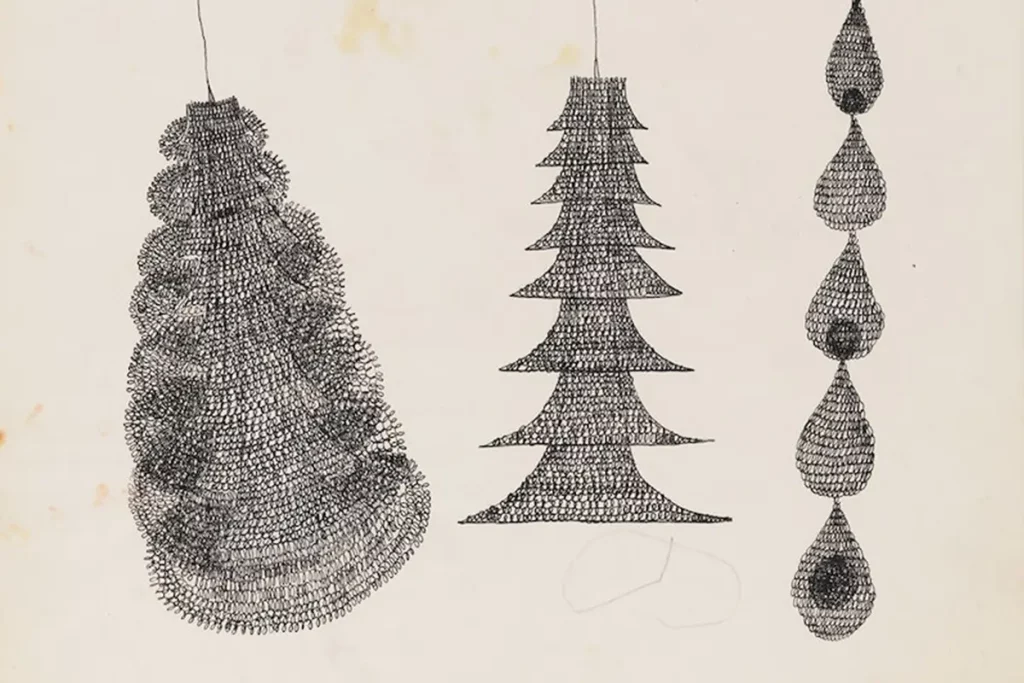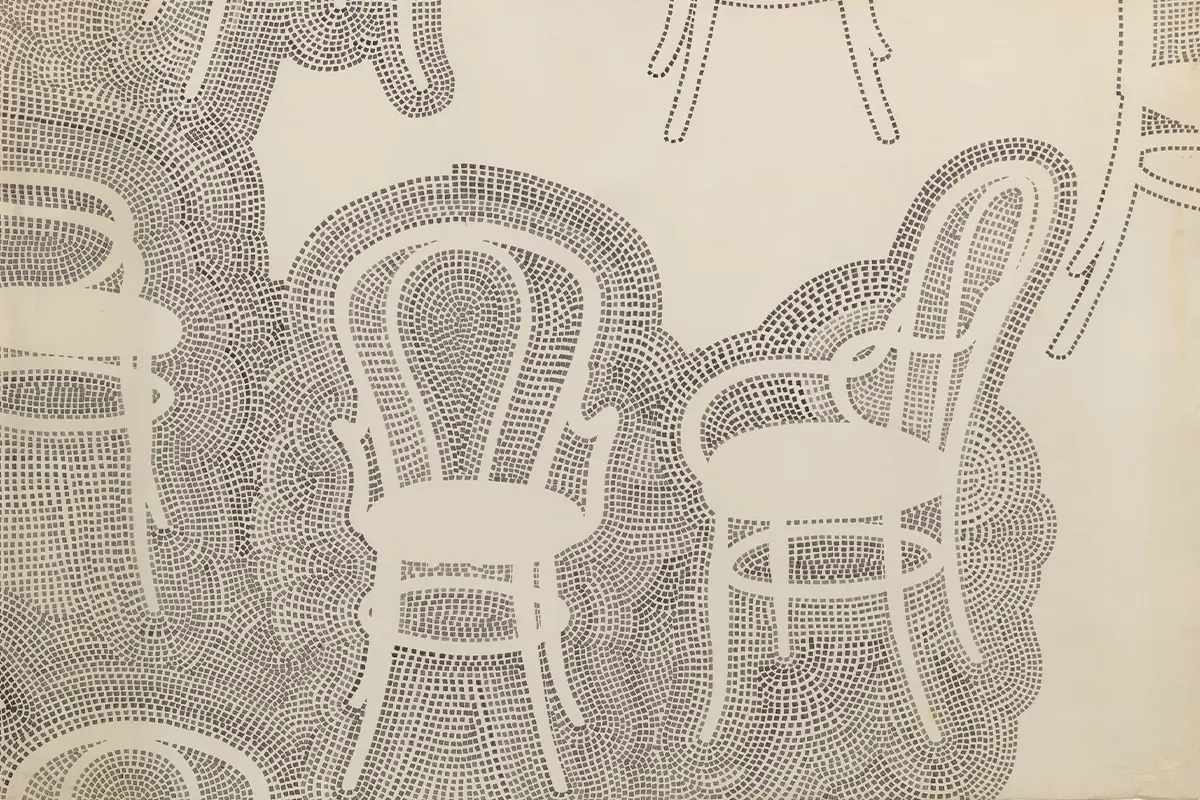Practice makes perfect: Ruth Asawa’s extensive, lifelong drawing production on paper, the fruit of the artist’s daily drawing practice, Through Line’ Exhibition is now on display at the Whitney Museum
Womanity in the spotlight – Through Line’ Exhibition Celebrating the American artist daily drawing practice with a hundred of Asawa’s works on paper at Whitney Museum
The Ruth Asawa Through Line exhibition held at the Whitney Museum of American Art in New York City’s Meatpacking District explores the American artist’s work through the lens of Ruth Asawa’s lifelong drawing practice. Between September 16, 2023, and January 15, 2024, at the Whitney Museum, visitors will get the chance to see over one hundred works of Asawa on paper, several of which have not been exhibited so far.
«Ruth Asawa’s association with the Whitney began in the 1950s when she exhibited in two Whitney Annuals, the forerunner to today’s Biennials, and her work helped inaugurate our downtown home», said Scott Rothkopf, Senior Deputy Director, and Nancy and Steve Crown Family Chief Curator in museum’s press release. «Although Asawa’s drawings may be less known than her sculptures, they are no less an achievement, and I am delighted that we can shine a spotlight on this big and moving body of work».
Ruth Asawa: a life dedicated to art, community, social change, and education
Ruth Asawa (1926–2013) was an artist, educator, and arts advocate from Southern California. The artist spent her childhood on her family’s farm, and her artistic talent was recognized early on. «I used to sit on the back of the horse-drawn leveler with my bare feet drawing forms in the sand, which later in life became the bulk of my sculptures». Years later, teenage Asawa and her family were incarcerated in the U.S. Japanese American Incarceration.
Asawa studied at the experimental liberal arts school Black Mountain College, near Asheville, North Carolina. About that time, the artist said: «Teachers there were practicing artists, there was no separation between studying, performing the daily chores, and relating to many art forms. I spent three years there and encountered great teachers who gave me enough stimulation to last me for the rest of my life — Josef Albers, painter, Buckminster Fuller, inventor, Max Dehn, the mathematician, and many others. Through them, I came to understand the total commitment required if one must be an artist».
In 1949, Asawa moved with her husband to the Bay Area, the backdrop of her career, community life, and activism. Asawa co-founded the Alvarado School Arts Workshop with architectural historian Sally Woodbridge, was a member of the San Francisco Arts Commission, the California Arts Council, and the San Francisco Arts Commission, and she was part of education task forces at the National Endowment for the Arts.
In her sixty years spent in San Francisco, the American artist left a mark on ‘City by the Bay’ with her work and activism in education. The Bay Area is still dotted with the fruits of her labor, like the Garden of Remembrance at San Francisco State University, which she designed, and the public art high school she decided to build, the Ruth Asawa San Francisco School of the Arts, which is named after her.
Womanity in art – Ruth Asawa’s lifelong drawing practice
Ruth Asawa was dedicated to her craft, working long hours and drawing until the small hours of the night. On watching her mother work, artist and arts educator Aiko Cuneo said, «We always saw her making art, it was part of her everyday existence. I never thought of her making art as a separate activity. To us, she wasn’t working. We didn’t have to be quiet so she could concentrate. Her art-making space was always in our house».
While Asawa’s most known artworks are her looped-wire sculptures, which the artist started creating in 1962 when a friend brought a desert plant from Death Valley and suggested the artist draw it, the American artist’s training was chiefly in design and drawing, and she took time every day to practice drawing, an activity she defined as «greatest pleasure and the most difficult».
The results of Ruth Asawa’s drawings daily drawing practice exhibited in Ruth Asawa Through Line highlight the role of drawing as the fil rouge of Asawa’s decades-long artistic production, starting from the contour line drawings of her hands from Asawa’s time at Black Mountain College to the selection of Asawa’s sketchbooks and the artist’s later portraits of her family, friends, and colleagues, «the most key thing, which is in the doing—integrating your life and your work and everything together».

Ruth Asawa – learning how to see the aesthetic possibilities of the everyday life through a daily drawing practice
Asawa used her daily drawing practice to investigate her surroundings and transform regular experiences into beautiful moments, finding tremendous creative potential in commonplace objects. This is reflected in views on art and artists: «An artist is not special. An artist is an ordinary person who can take ordinary things and make them special».
With their roughness, cleverness and spontaneity, Asawa’s drawings contain the seeds of her signature styles and motives, grown through her lifelong, daily drawing practice.
Asawa’s time at the Black Mountain College seems to have played a role in developing the artist’s ability to draw art from everyday life. In fact, Asawa remarked that Josef Albers, German artist and educator and Asawa professor at the North Carolinian college with his teachings in color, design, and drawing, had taught her ‘how to see’ in addition to ‘how to draw’.
«Asawa’s playful curiosity and generous ethos inspired many of her drawings, and these works in turn remind us to seek moments of wonder in our daily lives», says Kim Conaty, Steven and Ann Ames Curator of Drawings and Prints at the Whitney Museum of American Art. «The curly leaves of an endive, the pattern of a quilt wrapped around a young child, or the abstract movements of a dancer—all of these subjects, in Asawa’s expert hand, are rendered extraordinary».
These drawings, created in everyday moments like tending her children and during the meetings Asawa participated in as an activist, constituted the results of acts of daily drawing practice aimed at improving her focus and perception, allowing the American artist to see beyond the ordinary and capture the aesthetic possibilities of everyday life with the roughness and naturalness of artworks made on the spot.
Imogen Cunningham (1883–1976), an American photographer and Asawa’s close friend, advised her: «An Artist can still create by observing what is around them, children, plants, and making images that can be savored when we are old».
Sweet, everyday memories are the subjects of many of Asawa’s drawings, which are sublimated by the artist’s distinct style and vision. Through her eyes and hand, Asawa translates the intrinsic character of everyday things like flowers, trees, fruits, vegetables, chairs, and people through the distinctive leitmotivs of her vast artist prediction: negative space, roughness, line, and repetition.
In her third-person autobiographical notes, Asawa recounts her life, including her daily drawing practice. «Ruth washed the dishes, made the bed, and began to draw in her sketchbook…She was happy to draw for hours. . . . She had eight hours to quietly look/study and draw a bouquet of flowers that Albert had picked up at Union Square the day before. . . . Next week it will be a different bouquet. He would find one that he thought she would like to draw».
New York exhibition – Inside the Whitney Museum Ruth Asawa Through Line Exhibition featuring the artist never-seen before drawing production
Co-organized with the Houstonian art museum Menil Collection where it will be relocated to in March 2024, the Ruth Asawa Through Line exhibition is organized thematically with eight thematic sections that explore the lessons Asawa received and expanded upon during her time at the Black Mountain College, her ability to blend chance and intentionality, and the motifs and the techniques that characterized the artist’s circular artmaking practice, who her word though that: «Art is not a series of techniques, but an approach to learning, to questioning, and to sharing».
The exhibition will feature a selection of the American artist’s portraits, colorful watercolors, and nature-inspired abstractions on paper from both public and private collections in addition to the pieces from the Whitney Museum’s permanent collection like Asawa’s brush and ink on paper Plane Tree #12 (1959). These artworks exhibited in the Ruth Asawa Through Line allow visitors going up to floor number eight to see Asawa’s artistry’s remarkable breadth and broad vision and the role that drawing on paper played in the artist’s journey to developing the distinct roughness of her visual language. «I try to explore the total capacity of materials and techniques and often that takes me where I would not otherwise go».
The Whitney Museum
Founded in 1930 by Gertrude Vanderbilt Whitney, the Whitney Museum of American Art hosts works by twentieth-century and contemporary American artists in a building designed by architect Renzo Piano.



















